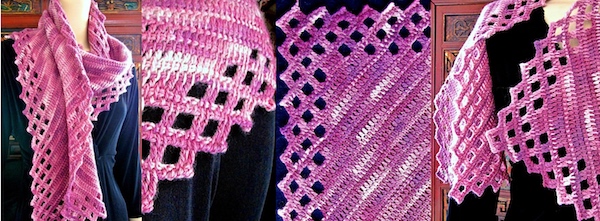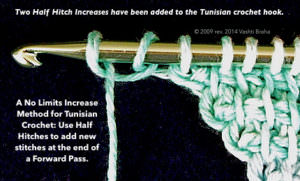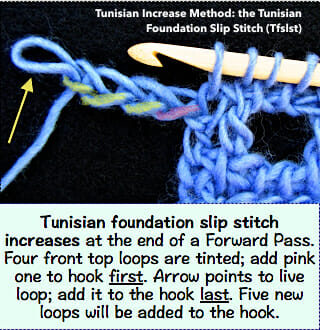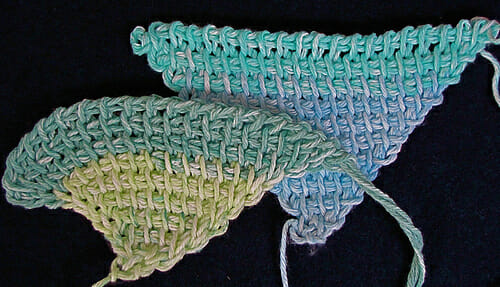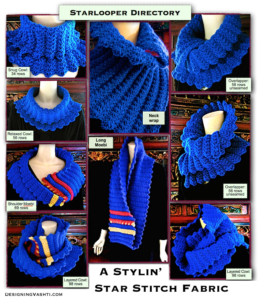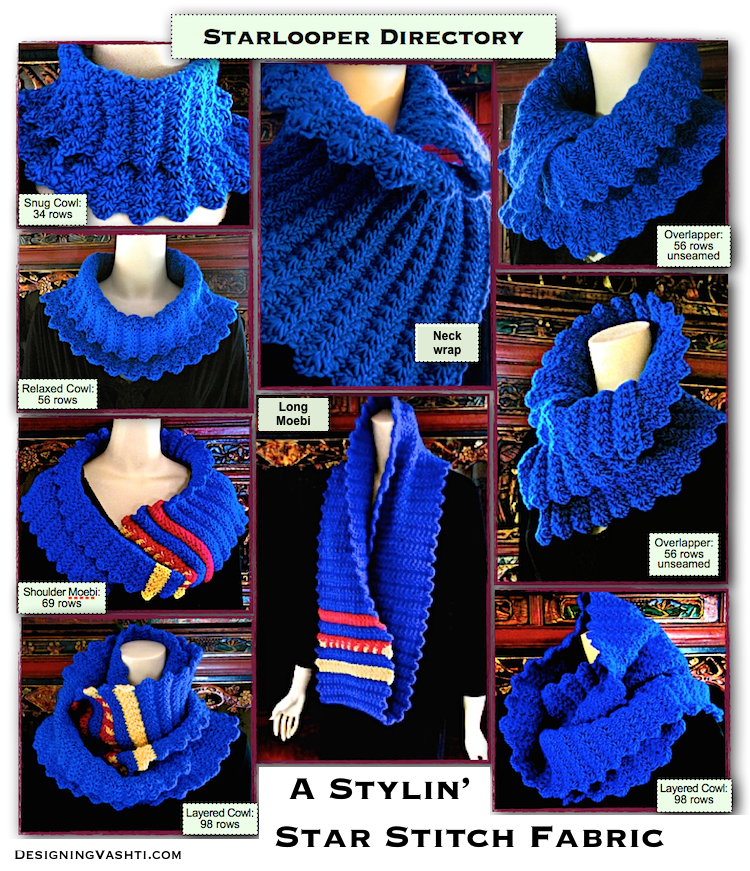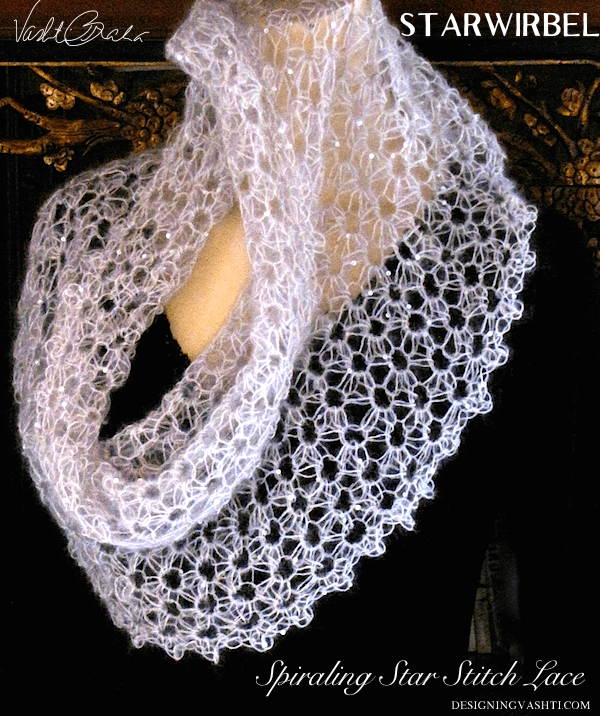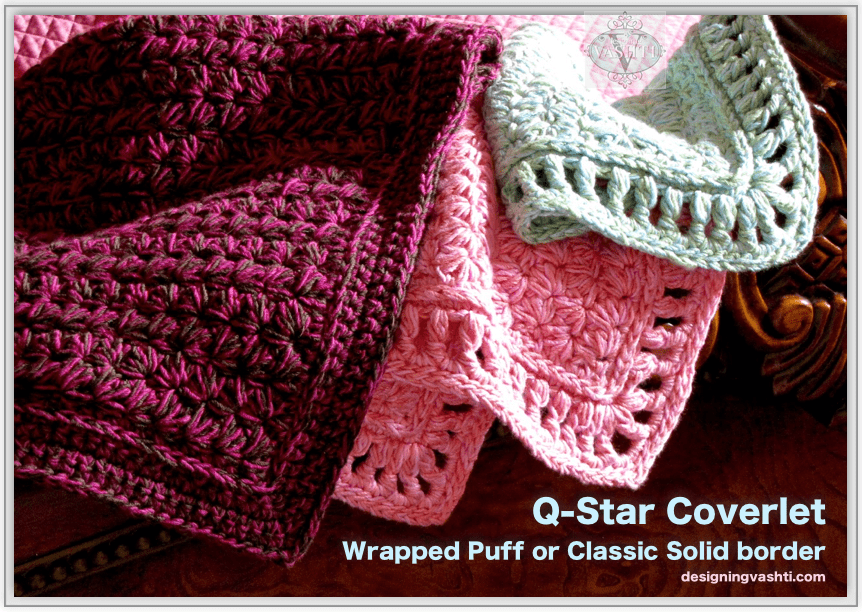
Note: The old URL for this design was www.shop.designingvashti.com/q-star-coverlet-reversible-star-stitches-24l-h5415.htm. The permanent URL for it is now https://www.designingvashti.com/product/q-star-coverlet-star-stitch/.
Q-Star Coverlet is a lavish, reversible star stitch pattern that results in a beautifully durable and warm blanket—just like a real quilt. (The “Q” is for “quilted.”) Pattern includes photo tutorials and 2 reversible borders: wrapped puff eyelets, or simple solid single crochet.
I developed the Q-star stitch to combine special features of other star stitches, and to eliminate biasing. I built in a nice selvage stitch for a stable edge. A surprise Q-uality of Q-stars is that they’re fully reversible!
Skill Level: Intermediate
This pattern is written with a minimal amount of abbreviations. UK and Australian equivalents for American measurements, yarn weights, and stitch terms are in brackets { }.
After using this pattern you will know (if you didn’t already):
- How to crochet an eleven-loop star stitch (22 loops if double-stranded).
- How to understand and use reversible star stitches.
- How crocheting with two different colors held together affects star stitches.
- How to end each row with a selvage stitch for perfectly straight, neat, stabilized edges.
- How to do a fully reversible surface slip stitch trim.
Finished Dimensions
Include a 1.5”-wide {3.8 cm} border. It’s easy to change the finished size by increasing or decreasing stitches and rows (guidelines provided in the pattern).
- Baby Stroller & Crib Blanket: 30” x 35” {76.2 cm by 88.9 cm}
- Lapghan: 38” x 45” {96.5 cm x 114.3 cm}
- Throw: 45″ x 56″ {114.3 cm x 142.2 cm}
- Twin Bed & Day Bed: 50″ x 72″ {127.0 cm x 182.9 cm}
Supplies Needed
Crochet Hook: I/9/5.5mm or size required for gauge.
Yarn used for the two-colored blankets: Two strands of different colors were held together throughout of DesigningVashti.com Lotus (52% Cotton, 48% Rayon; 256yd/234m per 3.5oz/100g skein). Color pairings shown: Pink Sugar and Peachy Sheen; Crystal Blue and Bamboo Green; Grenadine and Dark Roast. Two Lotus cones of each color would be enough to make the Lapghan size; add a third cone of each color to make the Throw size. For a baby blanket, use just one strand.
Notes about this yarn and substituting: Star stitches are so beautiful in this yarn that I originally planned to make a fancy jacket! As a coverlet it has a sleek, supple, heavy luster. Using two strands of similar colors, such as pink and peach, gives the stars a rich dimensional look. Choose a #2 Fine Weight yarn in one or two colors (a.k.a. Sport, Heavy Sock, Light DK, 5-Ply). You’ll be crocheting with two strands of it held together. Or use one strand of a yarn in the “#4 Medium Weight yarn” category (worsted, afghan, aran weight).
Yarn used for light grey blanket: One strand of Red Heart Fiesta (73% acrylic, 27% nylon, 316yds/289m per 6oz/170g skein. Color #6341 “Millenium”: 6 skeins for a Lapghan, 9 skeins for the Throw, and 12 skeins for the Twin/Day Bed size.
5 stitch markers, optional (4 to mark each corner stitch and a contrasting 5th one to mark the join while completing the border).
